A restaurant where you can enjoy Aso's specialty "Takana rice" and Kumamoto's specialty "Dagojiru"

Takanameshi is made by finely chopping Aso Takana Pickles, a local specialty of Aso, stir-frying it in oil, seasoning it, and mixing it with white rice. It is a home-cooked dish that has been eaten in Aso city for a long time, and is one of the local gourmet foods you should definitely try when sightseeing in Aso. This time, we will introduce restaurants where you can enjoy this Takanameshi together with Kumamoto's specialty Dagojiru. Both restaurants are located along National Route 57 (Dagojir...
-
Table of Contents
- Original Takanameshi Aso-ji
- Sanjoku Tabiji
- Himeji
Original Takanameshi Aso-ji
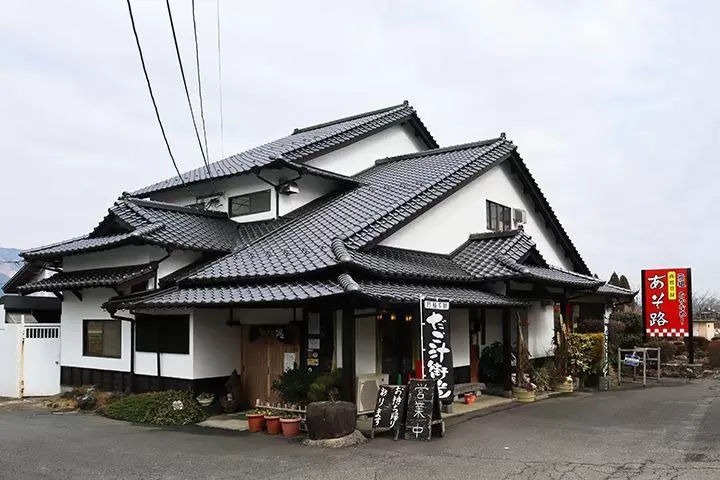
Look for the red sign of "Ganso Takanameshi" along National Route 57. Asoji, which is visited by many people on weekdays and holidays looking for the taste of a long-established restaurant, was the first restaurant to offer "takana meshi," a dish that had been popular in every household, on a restaurant menu. The signature dish, "takana meshi," is based on the taste that the great-grandmother of the current owner, Shogo Iseri, used to make for her children as a taste of her mother's cooking. It is a simple dish of chopped takana pickled stems and bamboo shoots fried and mixed with hot rice, but it is characterized by its unique richness and depth, as it uses homemade Aso takana pickles (old pickles). Even now, more than 50 years after the restaurant opened, you can enjoy the same simple taste as back then.
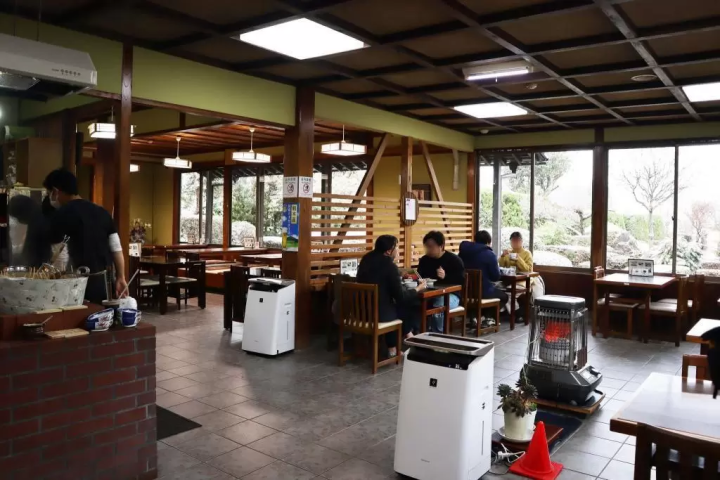
The interior of the restaurant is spacious, with table seating to the right of the entrance and tatami seating on the left at the back, and outside the windows you can see the beautiful garden and the magnificent view of Mt. Aso.
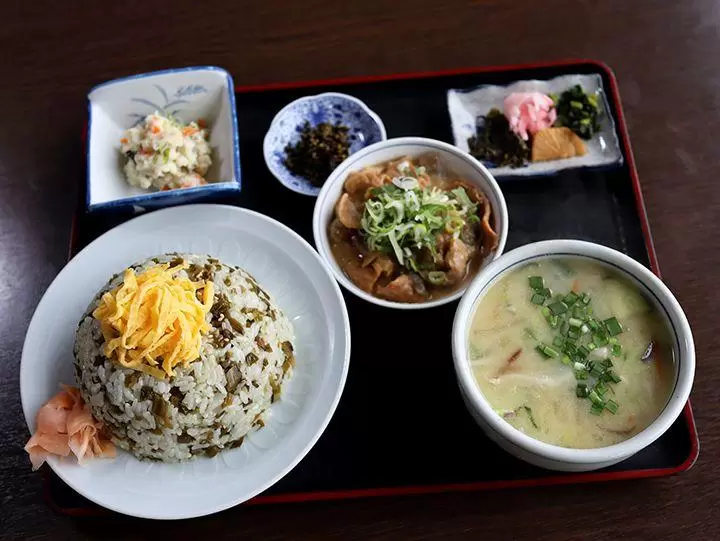
The most popular menu item is the hearty "Takana Meshi Set Meal (1,430 yen)" which comes with dumpling soup, soy pulp, stewed horumon, and homemade pickles. In addition to dumpling soup, you can choose from pork soup, rice soup, and miso soup.
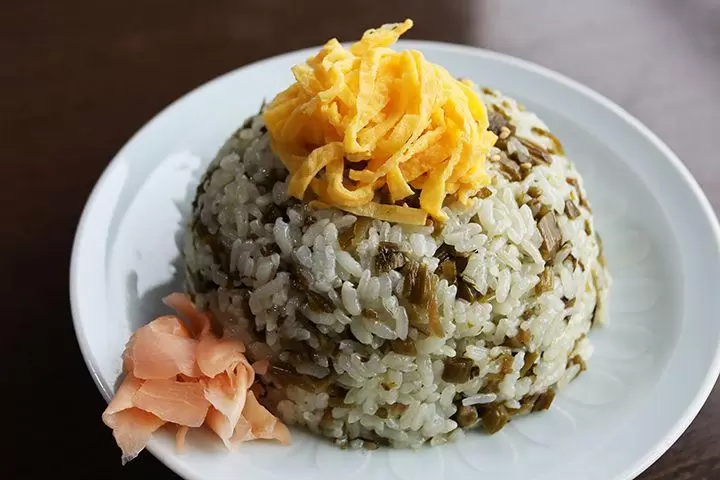
"Takanameshi" has an exquisite balance of crunchy and rich takana pickled stems and sweetly seasoned shredded egg. The restaurant uses aged pickles that have been left to mature for 6 months to 2 years, and you can enjoy the taste as a set meal or as a single item. Original Takanameshi (580 yen), small (480 yen), large (880 yen)
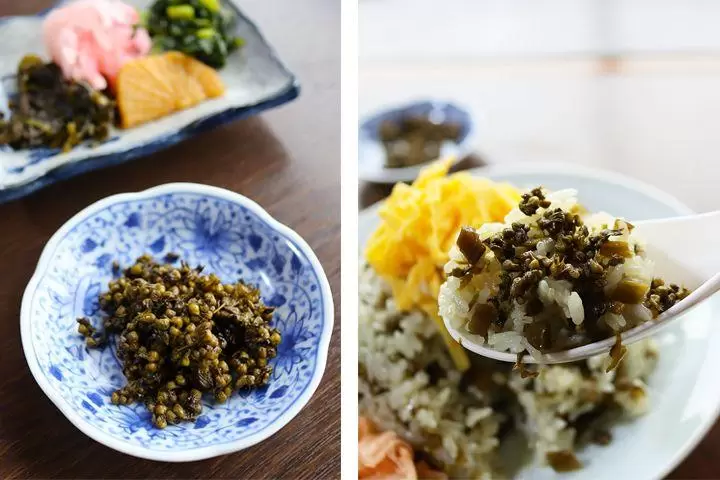
(Left) Every spring, the whole family gathers together to make authentic Aso Takana pickles, which are pickled in barrels, as well as shiso berries, seasonal pickles, and other small dishes served with the set meal are all delicious. They can also be purchased at the store.
(Right) Takana rice topped with shiso seeds is also delicious.
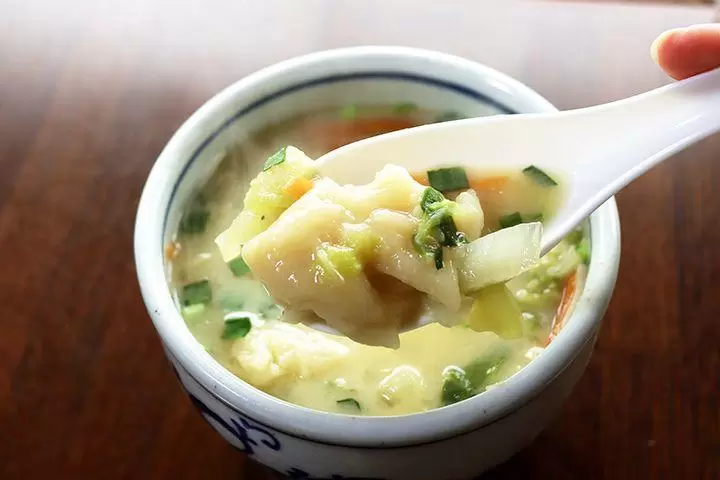
The miso-based "Dagojiru" is carefully cooked one pot at a time after the order is placed and served piping hot. The soup is made daily using kelp, dried sardines, mackerel flakes, and other ingredients, and is also full of vegetables such as Chinese cabbage, eggplant, carrots, and shiitake mushrooms! This is also a recipe that has been passed down since the restaurant first opened.
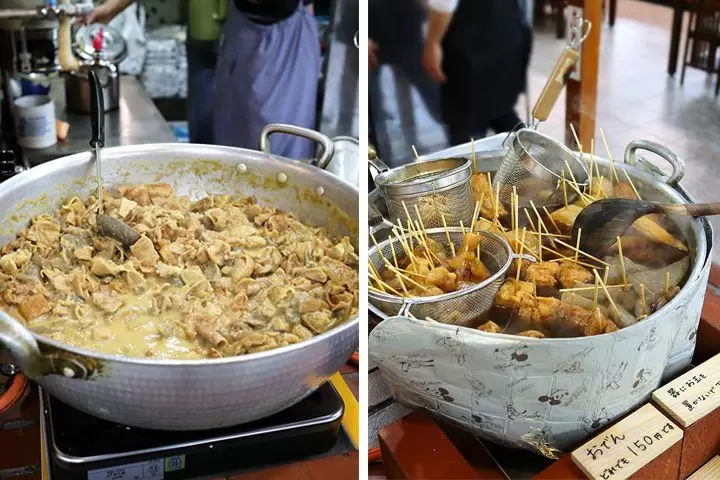
(Left) "Hormone stew," which is simmered for two days, is a popular specialty dish among regulars. It uses domestically produced horumon, has no unpleasant odor, and has a clean taste.
(Right) "Oden" is placed in the most prominent place in the center of the restaurant. Each ingredient is soaked in the soup that has been added to over the years. Prices start from 150 yen each.
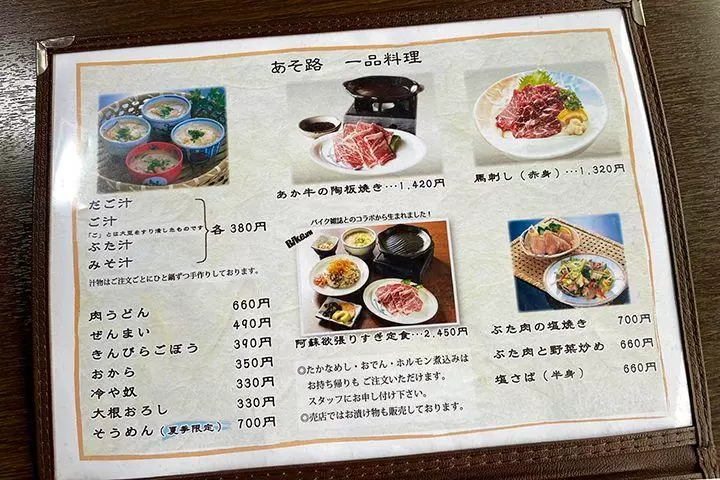
In addition to the set meals, you can also enjoy Kumamoto-style dishes such as red beef teppanyaki and horse sashimi. Takanameshi, oden, and stewed horumon are also available for takeout.
Sanjoku Tabiji
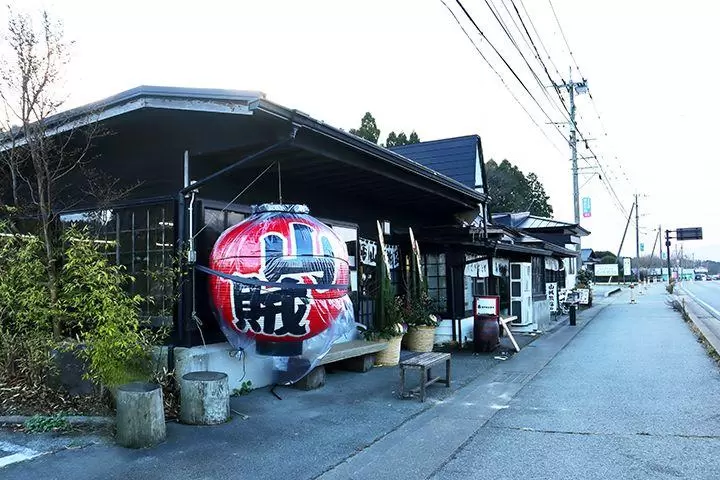
Located about one minute by car from Aso Cuddly Dominion, Sanzoku Tabiji is a long-established restaurant that has been in operation since its 54th year this year, run by owner Hiroyoshi Nagano, who used to work in agriculture, since his early 20s. When it first opened, the restaurant started with five tables, but has expanded year by year, and now it can accommodate 100 people, including tables and tatami mat seating. Many celebrities visit the restaurant, and it has become a famous restaurant that has lines even during the day on weekdays. There are many specialty dishes, such as the special "dago soup" that is served hot and fresh after ordering, and the "horumon stew" made with precious parts of domestic pork! If you see a big red lantern, it's a place you should definitely stop by.
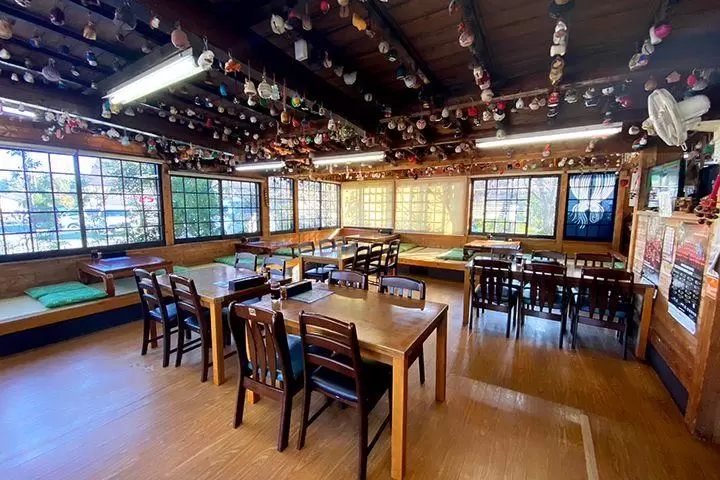
The interior of the store was built using wood from the mountains they own and beams from a cowshed. The ceiling is decorated with clay bells that the owners have collected over the years, creating a lively atmosphere.
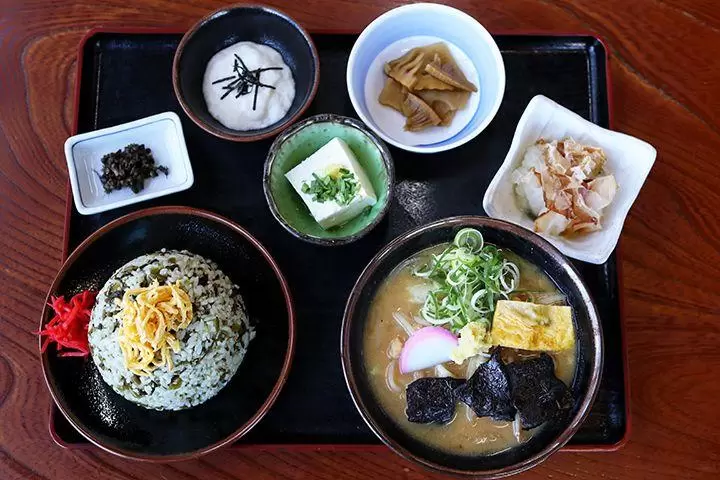
The "Dagojiru Set Meal (1,450 yen)" is a set that includes a hearty dagojiru soup as the main dish, takanameshi rice, and side dishes (hiyakko, yam, grated daikon radish, boiled bamboo shoots, and shiso seeds). The side dishes, such as traditional country tofu and sticky yam, are also delicious. You can change the takanameshi to sanzokumeshi.
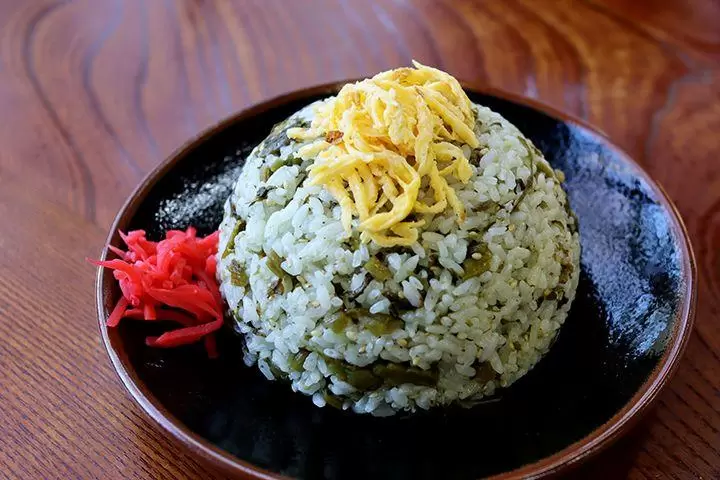
"Takanameshi" uses homemade Aso Takana pickles. The pickles are left to sit for over six months and then chopped up and mixed together, so you can enjoy a variety of textures, including leaves and stems, in one dish. The rice used is the lavish Aso Hikari variety, which is a rare variety.
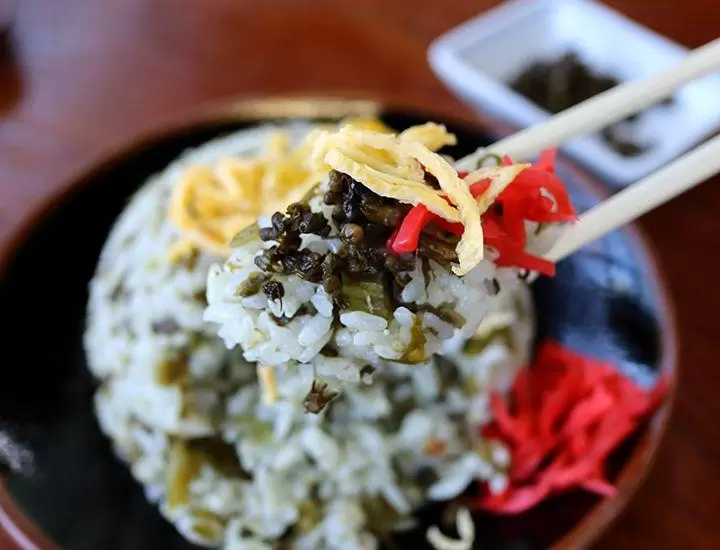
Takanameshi is delicious as is, but we also recommend eating it with shredded egg, pickled red ginger, and salted shiso seeds.
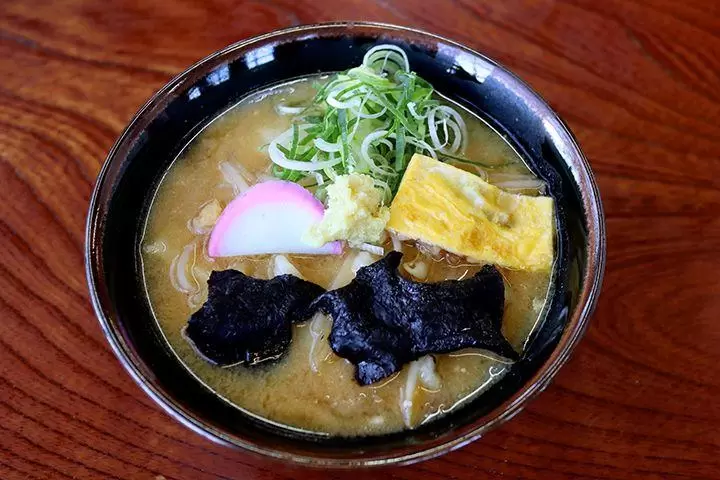
This is "Dagojiru" (dago soup), which is characterized by its rich flavor, made by blending several types of miso, including rice, barley, and red. After receiving an order, the ingredients and dumplings are added to a pot of dashi, and the miso is dissolved to finish, so it can always be enjoyed fresh.
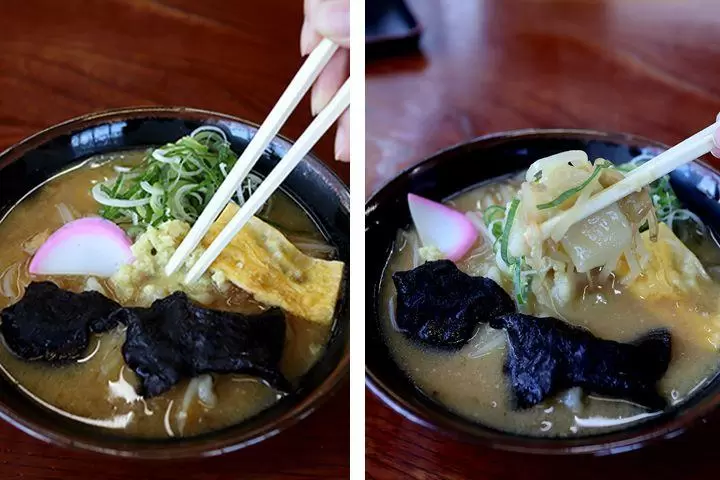
(Left) It is also topped with grated ginger. Mix it into the soup and eat it to warm your whole body!
(Right) The dumplings are made from domestic wheat from Kumamoto and Fukuoka, kneaded by hand and left to sit overnight. They are chewy and go perfectly with the bean sprouts, carrots, fried tofu, and other ingredients. The unique texture of the taro stalks is particularly addictive.
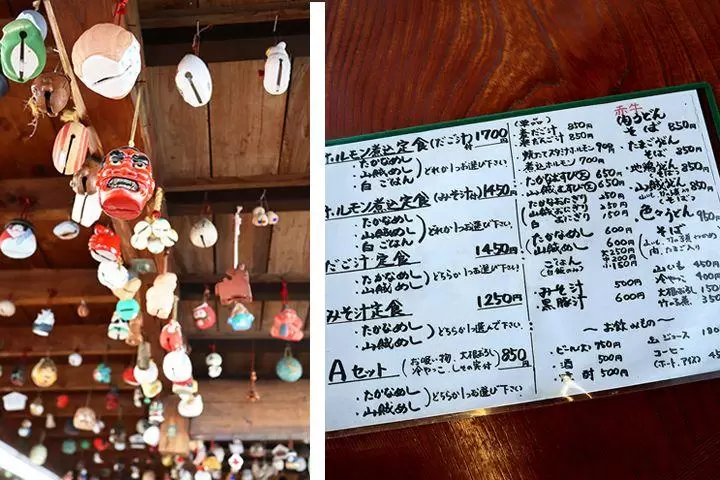
(Left) There are more than 800 clay bells hanging from the ceiling. Some of them were entrusted to us by customers who asked to have them displayed!
(Right) Menus on each table. Takanameshi is also available as "onigiri" (rice balls), so it is popular with small children.
Himeji
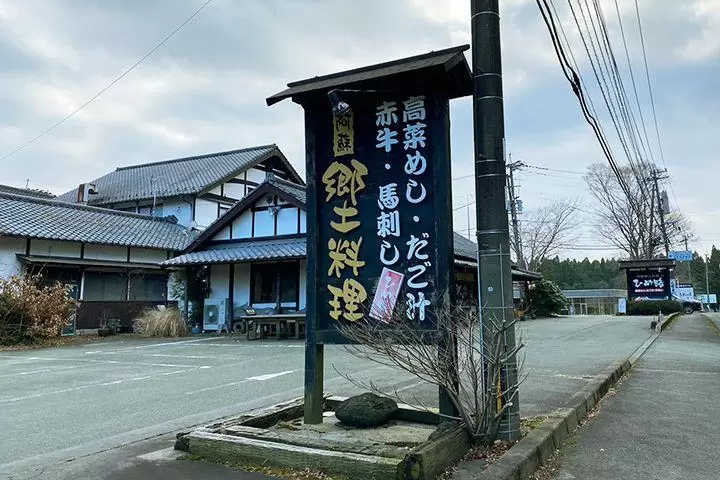
As you drive along National Route 57, a black sign reading "Aso Local Cuisine" catches your eye. Founded in 1986, Himeji is a restaurant that serves many of Kumamoto's representative local dishes, such as Aso-style dishes like Takana Meshi (green mustard rice) and Akagyu (red beef), as well as dumpling soup and horse sashimi. All of the menu items, from set meals to a la carte dishes, are very filling. Using locally grown seasonal vegetables and rice, and painstakingly making dashi stock... the dishes that the owner, Tazoe, painstakingly prepares are said to be delicious no matter what you order. There are even regulars who come from outside the prefecture once a month to eat at the restaurant in search of that flavor.
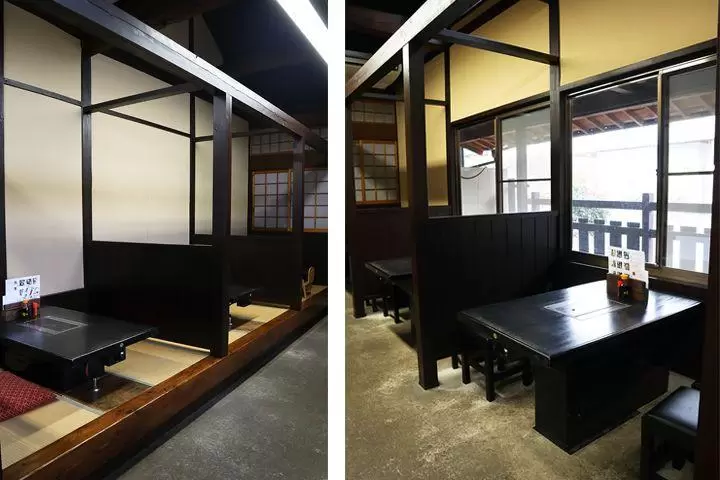
The restaurant has a purely Japanese atmosphere, with both table and tatami seating, so even families with children can relax and unwind.
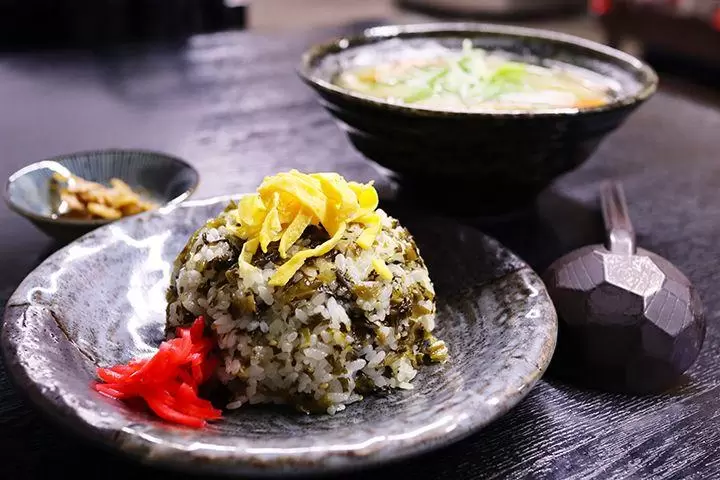
The "A Set (1,000 yen)" which comes with Takana rice, dumpling soup, and pickles is a popular menu among women. It is perfect for when you want to taste simple local cuisine. There are also a wide variety of set meals, such as the B Set with stewed offal and the C Set with horse meat sashimi, so you can choose according to your mood that day.
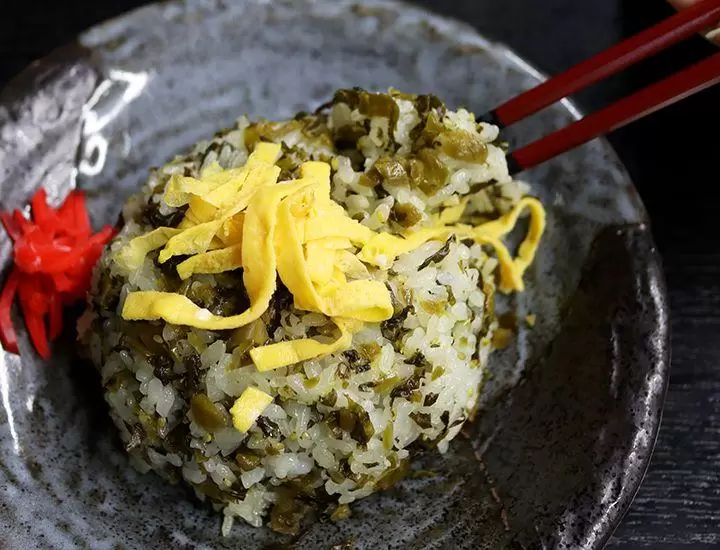
"Takana Meshi" is a dish with a generous amount of Aso Takana pickles mixed in, with a perfect balance of saltiness and sesame flavor. The rice used is Koshihikari purchased from a contracted farmer in the local Aso area, and you'll find yourself eating it over and over again.
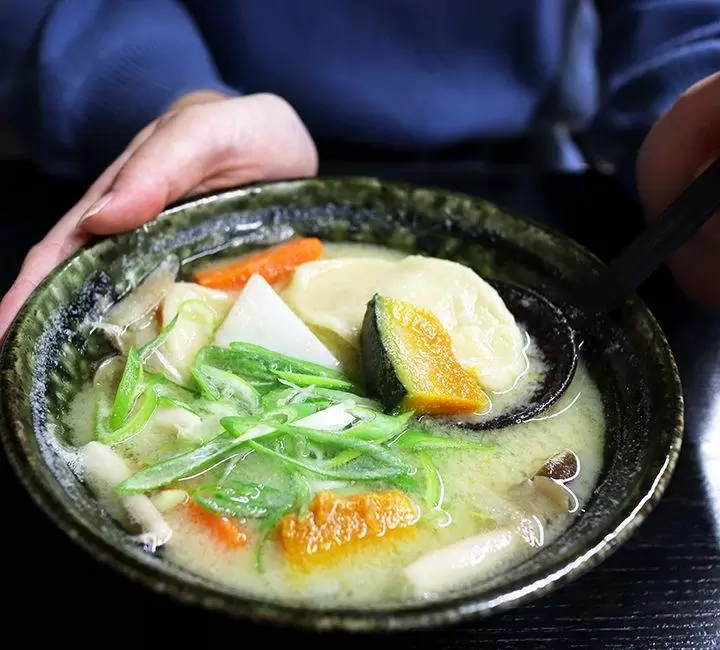
Just look at the size! The "Dagojiru" has a refined sweetness and is made with a stock made from Rausu kelp and Gintare (dried sardines) blended with several types of miso, and is filled with large pieces of locally grown vegetables such as burdock, carrots, shiitake mushrooms, taro, shimeji mushrooms, and pumpkin. By the way, the vegetables are boiled separately before being simmered, so the soup is full of concentrated umami flavor.
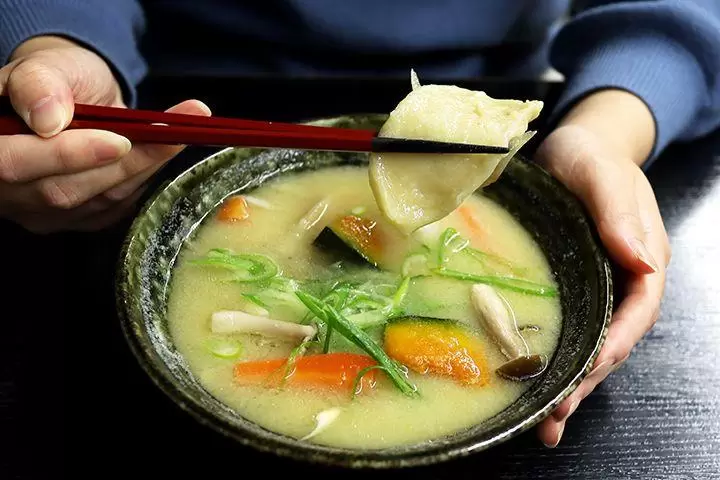
Dago is made by kneading flour and water, then letting it sit for a day. It is flat, elastic, and chewy. It is interesting that each one is a different size because it is handmade and placed in the pot after an order is placed.
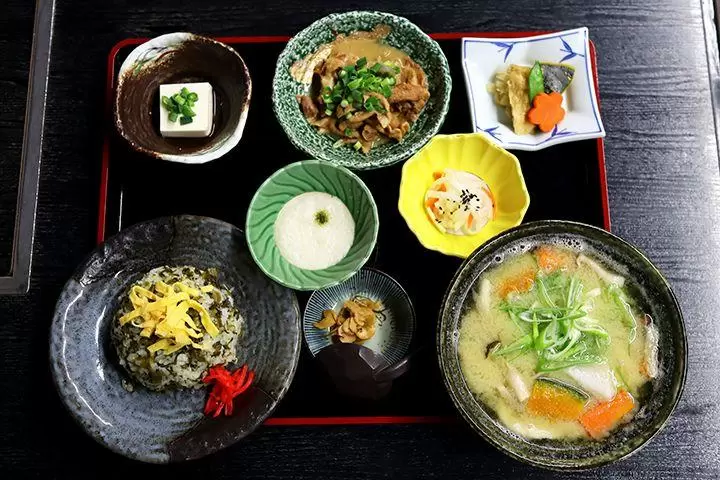
The "Takana Meshi Set Meal (1,540 yen)" is also popular, where you can enjoy three of Himeji's proud dishes (Takana Meshi, Dagojiru soup, and Stewed Offal) all at once. It also comes with a small side dish, so you'll be full.
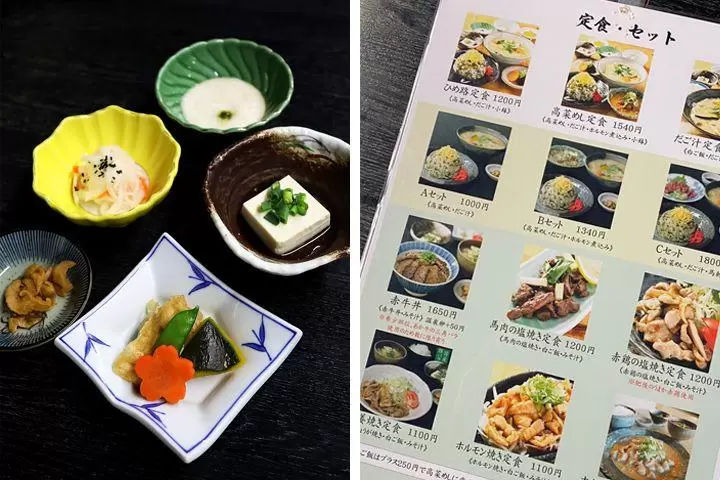
(Left) Most of the side dishes that come with the set meals are handmade in the restaurant. The seasoning that makes the most of the ingredients is well-received.
(Right) A wide variety of appetizing dishes are on the menu, including red beef bowls and salt-grilled horse meat set meals.
Kumamoto Prefecture is a city where history and nature coexist, including Kumamoto Castle, one of Japan's three most famous castles, Mt. Aso, which has one of the world's largest calderas, and Amakusa, which is home to approximately 300 dolphins. It is the hometown of Japan's most famous local mascot, Kumamon, and you will be excited to meet Kumamon somewhere in the city! It is also the hometown of Eiichiro Oda, the author of the world-famous manga One Piece, and you can see statues of the Straw Hat Pirates throughout the prefecture. The food and drinks made with fresh ingredients from all over the prefecture are all delicious. Please come and visit Kumamoto Prefecture, which will soothe your five senses!
The contents on this page may partially contain automatic translation.



![3 must-visit beer gardens in Kumamoto this summer [2024 Edition]](https://resources.matcha-jp.com/resize/200x2000/2024/07/09-187243.webp)
![Hotels with delicious breakfasts [Kumamoto city area]](https://resources.matcha-jp.com/resize/200x2000/2024/07/03-186328.webp)































![[2026] Top 5 Strawberry Picking Spots in Tokushima, Naruto| Farms and Access Guide for January to May](https://resources.matcha-jp.com/resize/720x2000/2025/03/06-227165.webp)

